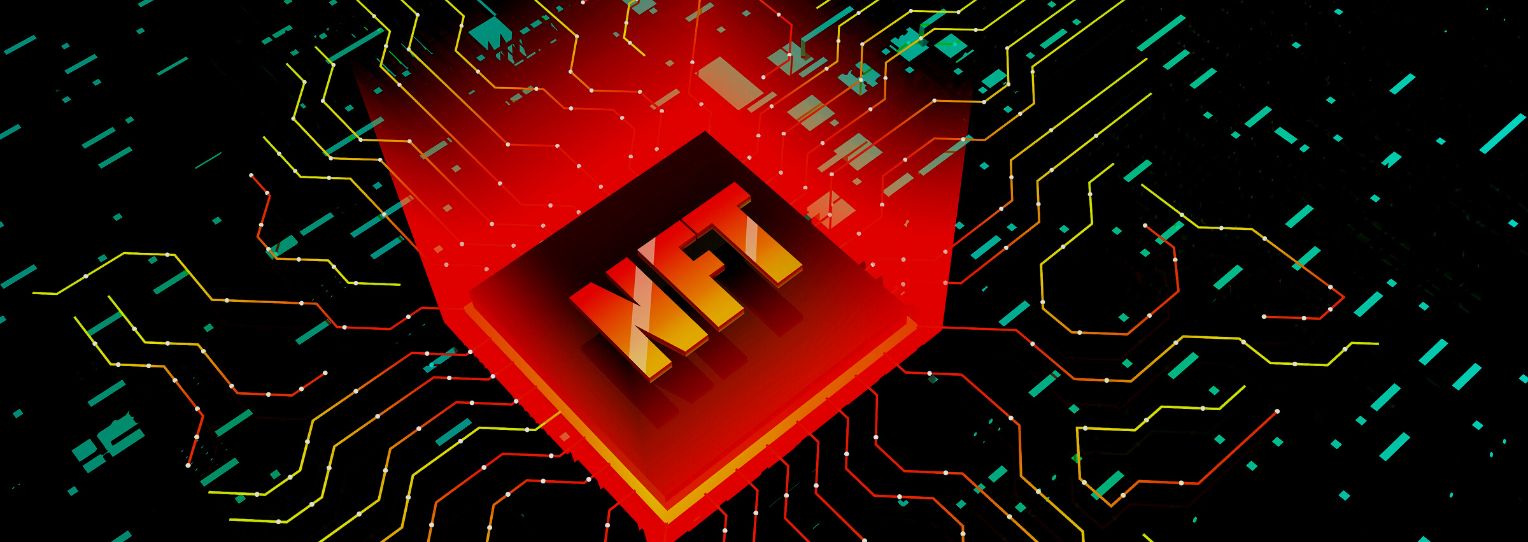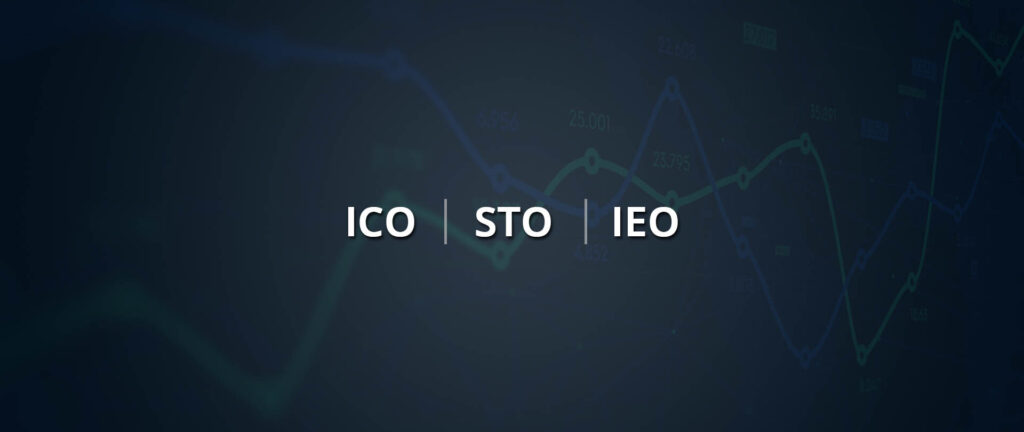
Coachella, Super Bowl, Campbell’s, Dolce & Gabanna, Nike, Gucci, and MAC are just a few brands that successfully used NFT as a marketing strategy. In the bigger picture, the use of NFTs grew by 11,000% in 2021, despite polls suggesting that one in four Americans do not understand NFTs! The mainstream adoption of NFTs has let market researchers develop a strategy to promote and engage like never before. Keep reading to leverage the trending market ideas for your NFT campaign.
- What is an NFT?
- How to create and launch an NFT?
- How to launch your NFT Campaign?
- How are brands using NFT for marketing?
- Future of NFT Campaign
What is an NFT?
NFT stands for ‘non-fungible token,’ which refers to a digital asset that exists on a blockchain. NFTs cannot be interchanged, unlike cryptocurrencies like Bitcoin or Ethereum, which are fungible and can be exchanged or traded for one another. Each NFT represents real-world objects like images, videos, music, graphics, in-game assets, and so on. They are bought using cryptocurrencies or fiat currencies and are usually built with the same underlying software as many cryptos. NFTs have existed since 2014, but lately, they have been soaring as a way of buying and selling digital artwork. The concept of NFTs is about holding the ownership of the digital item. Trading an NFT is not only about exchanging value (like in crypto) but also about exchanging ownership from the seller to the buyer.
Related Article: Top 10 Doubts And Questions On NFTs Answered
Some popular NFTs include: “EVERYDAYS: The First 500 Days,” which sold for a record-breaking 69.3 million USD by artist Mike Winklemann popularly known as “Beeple.” Iconic video clips of NBA games sell for up to USD 208K. Essentially, NFTs are physical collectors’ items but digital.
How to create and launch an NFT?
NFTs are not created but “minted” in popular blockchain language. NFTs are usually minted on platforms that also allow their trading. To create an NFT, you basically have to have three things.
- The digital content you want to mint as an NFT.
- Some crypto to pay the minting fee.
- A wallet to store crypto.
Let’s expand on these step-by-step.
Step 1: Purchase Cryptocurrency
Most NFT minting platforms demand a minting fee to create an NFT (though the fee is slowly fading as platforms get more competitive). Platforms demand minting fees mainly to maintain the platform and to handle the computational power needed to mint an NFT. The minting fee should be paid in the cryptocurrency based on the same blockchain as the one in which the NFT will be minted.
For example, Ethereum is the most famous blockchain for NFTs (the second-largest after Bitcoin). To mint an NFT on Ethereum, you pay the fee as Ether (ETH). Some minting platforms accept multiple cryptos for payments other than the native one of the blockchain you have chosen. Other blockchains besides Ethereum, famous for NFTs, include Solana, Tezos, and Flow. In conclusion, ensure you have the crypto that aligns with the blockchain used to create the NFT.
Step 2: You need a Crypto Wallet
Just like regular old wallets for money, you need a crypto wallet to store your cryptocurrencies anytime you purchase. The account where we store cryptos is called a wallet, like a digital bank account. For example, Metamask is a widely used and recommended crypto wallet, especially for beginners looking to buy or sell NFTs. It can be used as a web browser extension or a mobile app. Metamask holds numerous cryptos and is compatible with many NFT marketplaces.
A few other popular and advanced wallets for crypto are:
- Nano X: A hardware wallet that connects to your PC or device via Bluetooth. It comes with a mobile app to buy, sell or trade crypto, NFT, and other blockchain assets.
- Trezor One: Uses an advanced PIN code method to protect your wallet. It is also one of the oldest and most secure hardware wallet systems.
- Exodus: A wallet that is connected to an in-built cryptocurrency exchange. It includes hardware, desktop, and mobile versions.
Step 3: Choose an NFT Platform
There are dozens of NFT platforms to choose from that give a lot of choices regarding your NFT. Explore some platforms and find the one that suits your project the most.
Some of the NFT platforms that standout include:
- OpenSea: Being the world’s first and largest NFT marketplace. It gives you the advantage of a huge audience for your NFTs. You can set up a marketplace for your NFTs in OpenSea for free and trade without paying a gas fee.
- Rarible: In Rarible, you can create NFTs on blockchains, including Ethereum, Tezos, or Flow. You can even make payments through credit cards. Rarible offers community features, low marketplace fees, and flexible blockchain support.
- Mintable: Let’s you mint NFTs with no upfront fees. The fee-free minting option makes mintable perfect for those starting in the NFT realm. It has a feature-rich, powerful UI and runs on the Ethereum blockchain.
Most NFT platforms are fairly easy for anyone with sufficient internet experience. Usually, there is no need for special technical knowledge or skills. Once a platform is chosen, you must set up a profile and connect your crypto wallet using your wallet’s key or seed phrase.
Step 4: Upload your Digital Art File
Almost all major NFT platforms have an option labeled “create.” Upload your digital art file in the create option and provide a title and description to mint it as an NFT. Any digital media can be minted as NFTs. If you do not have original works, you can also mint digital arts that are not subject to copyright claims or are allowed for commercial use. You can find images released for commercial use or stock photos on platforms such as Creative Commons, Flickr, Unsplash, or Pexels.
You can modify those images to make them your own by adding value with cartooning, filters, or texts. The front-end of creating an NFT is similar to listing any other product you want to sell online.
Step 5: Describe your NFT
Every platform has different descriptions templates, but generally, just tell the buyers what your digital art is. The descriptions are usually a paragraph or two describing the artwork and, if applicable, about the creators.
Royalties: You will earn 100% of the profit when you first sell your NFT (from the primary marketplace). Further, when someone else owns it and resells it (in the secondary marketplace), you can choose to receive a royalty payment. You can set a percentage, and each time your NFT is sold, you will receive that percentage of the share.
Step 6: Transfer Copyright
In more advanced options, you get to choose if you want to transfer the copyright of your NFT or not. If you want to delve into more advanced details for your NFT, you’ll find the option to transfer copyright or not when the asset sells. If the copyright is transferred, the buyer can use the artwork as they please. They get the right to reproduce, modify, or use it commercially without your permission. And since you have given up the copyright, you can no longer use the NFT.
Step 7: How do you want to sell the NFT?
Depending on the NFT platform you choose, you will get to sell your NFTs in different ways.
Some of them include:
- Fixed price: You set a price for the NFT, and the buyer must pay that amount to buy it.
- Limited-time auction: This method is similar to selling stuff on eBay. You let the buyers bid on your NFT for a limited time and sell it to the highest bidder at the end of the period.
- Open auction: You can select or reject the offers buyers make at any time.
- Auction with a buy now option: Along with an open or timed auction, you can also have a “buy now” option to let anyone willing pay the price you have set to buy the NFT.
Related Article: Applications of NFTs in Digital Entertainment
Once the sale model is chosen for your NFT, set it up and choose a price. With this, you can launch your NFTs. You can set the price in fiat currencies or the cryptocurrency of your choice.
How to launch your NFT Campaign?
Now that you have created and launched your NFT, it is time to tell the world about it. Like with any other product, marketing and promotion campaigns are essential for blockchain products, too, especially as NFT projects get more competitive daily. When you conduct NFT campaign projects across marketplaces, blockchain communities, and social media, you reach diverse prospects and deliver timely updates to your target audience. It does not matter how attractive, rare, or special your NFT is; you must have a proper strategy to attract buyers.
Related Article: Initial NFT Offering: How to launch an INO
Down below is a complete marketing checklist to help you launch a highly visible NFT campaign.
- Video Teasers: Create a short video to preview your NFT collection. Narrative teasers that bring life to the NFTs are great at turning heads. An example of a video teaser is Bored Apes Yacht Club’s ‘Apocalyptic Apes NFT.
- Building A Community: Engage with your target audience constantly and build a community. You can use social media platforms such as Twitter, Telegram, Discord, Reddit, etc. VeeFriends and CyberKongz have created some wonderful communities on Discord for their projects.
- List your NFT on multiple marketplaces: As a part of the NFT campaign, list your token on marketplaces other than the one you minted it on. Focus on platforms with a larger customer base and those focusing on your NFT niche. A few other marketplaces other than the ones already mentioned include SuperRare, Foundation, Nifty Gateway (where Beeple sold his famous art), Mintable, and Theta Drop.
- Email Marketing: Building an NFT community can give you a decent number of subscribers who hold the key to email marketing. Regular updates and news about your NFT through emails can help your subscribers become the next buyers. You can launch drip email campaigns that involve sending a pre-written set of messages to customers timely. This can be used to notify buyers about NFT price trends. Email campaign strengthens the bond with buyers who are already interested in your project and have subscribed.
Marketers who personalize their emails to customers report 27% higher click rates and 11% higher open rates than those who do not. Meanwhile, 52% of consumers say they’ll prefer elsewhere for their needs if a brand sends a non-personalized email.
- Influencer Partnerships: Partnering with NFT influencers with a decent follower base can help increase the reach and credibility of your NFT project. NFT expert influencers come with a loyal fanbase who would consider their recommendations and opinions. Some top NFT influencers include:
- OpenNFT
- Gary Vaynerchuk
- Ty Smith
- Kenn Bosak
A few ideas to use with influencers are:
- Creating a video clip: A video trend faster, and the information is easy to digest. Thus consider creating a video clip with the chosen influencer.
- Blogging: Partnering with NFT, crypto, and blockchain bloggers to publish in-depth content about your project to a wide readership can get some solid returns. You can also interview other influencers, discuss your project, and post the interview as a blog on your website too.
- Livestreaming: Live streaming your NFT campaign content with influencers is also an option to interactively introduce or explain your project.
How are brands using NFT Campaign for marketing?
Popular brands have realized the power of NFTs in marketing. Soft drinks, chocolate, and cereal brands come up with the gamified idea of physical collectibles in the form of cards, wrappers, bottles, or boxes. The same strategy has been extended to provide digital collectibles. Let’s look at how popular brands are strategizing NFT for marketing.
Friendship Loot Box by Coca Cola
To celebrate international friendship day, Coca-Cola released an NFT called “Friendship Loot Box,” a dynamic pack of four NFTs. The NFTs combined metaverse and real-life loot boxes inspired by video games to deliver a multi-sensory experience.
Related Article: Play to Earn NFT: How Players are making a living with NFTs
- A “Coca-Cola Bubble Jacket Wearable,” which digital avatars can wear in Decentraland metaverse.
- A “Coca-Cola Friendship Card” based on the original 1940s artwork.
- The “Coca-Cola Sound Visualizer” had sounds related to the drink.
- The “Coca-Cola Vintage Cooler NFT,” an actionable digital version of Coke’s 1956 retro vending machines.
In addition to all these, the NFT also had hidden surprises that could be unlocked when opened. Coca-Cola used a significant date in people’s lives to favor its NFT campaign. The brand also conducted a live AMA session (Ask Me Anything). Lucky guests won ‘Mythic’ Coca-Cola wearable t-shirts. They also kept the audience engaged before and during the Friendship Box NFT launch by starting a thread on Twitter. The brand donated the proceeds from the campaign to Special Olympics International.
Sunrise Red Digital Shoe NFT Campaign by Asics
Asics is the first sportswear brand to release its own NFTs. In July of 2021, the brand launched a limited edition digital NFT sneakers collection titled “Sunrise Red.” It also released a “Gold Edition” with digital versions of unique items sold by the Asics. The OBJ files of minted digital shoes were sent to successful bidders. The profits from this campaign were invested back into the digital arts community via the ASICS’ new Digital Goods Artist-In-Residence Program.
Transformative Tacos: Taco Bell‘s
A series of taco-themed NFTs were released through Rarible by Taco Bell to Taco Bell to honor the iconic Mexican dish. Four of the designs were cartoon GIFs. The 25th edition, “Transformative Taco,” sold out in the first half-hour. The first owner of Transformative Taco received a $500 e-gift card. The proceed from this campaign were used to support educational causes.
NFT campaign by Team GM
The Great British Olympic was the first Olympic team to release original NFTs. The NFT collection contains five iconic Gold Medal moments of the team, including the pens from the recent Tokyo Olympics 2020. The historical highlights are made in collaboration with the artist Ben Mosley. The NFTs are released regularly, giving fans more chances to engage with the team and support the athletes. All the earnings from this collection go to the British Olympics Association.
Future of NFT Campaign
Advanced technological innovations such as NFT pave the ways for brands to reinvent themselves in everything from marketing to customer experience. This, combined with the metaverse, has brought out novel ideas for brands to advertise, promote and engage with digital versions of products, marketplaces, and even digital ambassadors. Proving the same, Kinahan, the famous whisky house’s NFT and metaverse projects, have digital ambassadors who participate in campaigns in the metaverse.
Through NFTs, customers get unique digital user experiences embedded with physical benefits. “The virtual and augmented reality could boost the global economy by 1.4 trillion pounds by 2030”, says PwC, and this prediction enhances the possibilities of brands using NFT for marketing. With such a development and widespread adoption, NFTs are becoming the new marketing trend.


